Visiting Prague is a little like going back in time, to several eras all at once. The city’s Old Town is covered in cobblestones and remains home to striking medieval structures and a layout dating to the 9th century. The world-famous Charles Bridge has served as a Vltava River crossing since 1402. Stunning Art Nouveau art and architecture graces the city like leftover 19th-century treasures.
Prague’s more recent past conjures memories of two World Wars, the 1989 Velvet Revolution that restored democracy, right up to the first LGBT Pride celebration in 2011.
All this history lends to a sense of timelessness in Prague. The city’s character is so rich, having endured high and extremely low times, that a visit to the Czech metropolis today is like a voyage into a gorgeous, living time capsule. One that’s also embraced the modern world with a particular brand of creativity infused throughout this city of 1.2 million residents. Some of the world’s greatest artists, conquerors and engineers have called Prague home, and their legacy is key to why the city is a world capital with nothing to prove.
A Tourist of History
So, where to begin as a visitor to the “Paris of Eastern Europe”? Like most cities, it’s wise to dive into the tried-and-true tourist attractions, which leads us to Old Town, or in Czech, “Staré M?sto.” Yes, throngs of camera-ready travelers from around the world descend on the original Prague settlement every year. And they are absolutely right to do just that, because few capitals offer such picturesque subject matter.
Most visitors will head into Old Town from the Powder Gate, one of the original 13 gates that led into the city. This one dates back to 1475, and takes it name from also serving as a gunpowder-storage tower. Its Gothic details seem all the more brooding thanks to centuries of soot buildup, which make for a perfect entrance to the medieval central square.
Next door to the Powder Gate is the breathtaking Municipal House (nám?stí Republiky 5, +420 222 002 129, obecnidum.cz/en), which houses multiple restaurants, theaters and other gorgeously designed spaces. In any other city, this building would be the standout, with its combination of Art Deco and Nouveau details, one-of-a-kind murals and fixtures, nightly musical performances, and storied history—both the site, where the Royal Palace stood for about six centuries, and today’s marvelous 1905 structure. Consider taking a guided tour, or if you’re pressed for time, stop for coffee and a slice of their daily-changing cake at the Kavárna Obecní D?m (nám?stí Republiky 5, +420 222 002 763, kavarnaod.cz).
Though dotted with all-too-contemporary souvenir and luggage shops, the short walk from the Powder Gate is an excellent buildup to what finally appears as you enter Old Town Square: full-on fairytale beauty. The Goltz-Kinsky Palace is a pink-and-white Rococo masterpiece built in 1756. The Church of Our Lady Before Tyn represents Gothic, Romanesque and Baroque architecture, and its enormous spires have marked the square for miles around since the 14th century. The 1915 memorial to Jan Hus stands at the square’s center, honoring the Czech religious reformer who paved the way to Protestantism well before Martin Luther, which sadly led to being burned at the stake here in 1415.
These are just a few of the dramatic sights absorbed simply by standing in one spot. And then there’s the Astronomical Clock, which adorns the southern side of the Old Town City Hall. The oldest operating clock of its kind in the world, the Astronomical Clock is alone worth a visit to Prague. Its marvelous colors, rich symbolism, moving figures, and 600-year history are virtually incomparable to any other world attraction. Part of its intrigue—beyond the astronomy, astrology and fact that the ticking clock still represents the current state of the universe (basically an early planetarium)—is that every hour, a window opens above the clock and carved-wooden figures of the 12 Christian apostles “pass by.” Plan to visit this spot by day and night to see how light alters its shimmering colors.
From Old Town, it’s an easy walk to that world-famous attraction, the Charles Bridge. Here’s another very functional, totally fascinating Prague construction that took half a century to erect. The Bohemia native turned Holy Roman Emperor King Charles IV set out to replace the faulty Vltava bridges that repeatedly collapsed. Charles strongly believed in numerology, and at precisely 5:31 a.m. on July 9, 1357—which forms an auspicious scale of numbers counting upwards and back down starting with the year (135797531)—he personally set the bridge’s first stone. One could argue his belief system works, because despite floods and wars, its pillars, towers and cobbles continue to convey millions of pedestrians across the river every year. As you cross the remarkable span today, find the statue of the first Czech Christian martyr St. Ludmila and 29 other centuries-old tributes.
Storming the Castle
On the far shore of the Vltava River is Lesser Town, which despite its name seems to attract even more tourists. (In Czech, the area is called “Malá Strana,” or “Little Quarter” for being on the far side of the river.) They’re wise to explore this pretty, mainly pedestrian district that leads to Prague Castle. On the way many cafés and shopkeepers will invite you in, but one romantic stop for fine dining is U Malí (Maltézské nám?stí 291/11, +420 257 530 318, umaliru.cz/en/), a French and Czech restaurant housed in a 1543 painter’s home—the restaurant’s name translates to “at the painter’s.”
Roam through the winding streets past churches and monuments up the hill to the stately Prague Castle and its enormous grounds. The Castle is the official residence and office of the Czech president, and on a side note, is ranked by Guinness as the world’s largest ancient castle.
There are several highlights within the castle walls, top among them is St. Vitus Cathedral (III. nádvo?í 48/2, +420 224 372 434, katedralasvatehovita.cz/en). Work began on the site as far back as 930, but the massive Gothic structure we visit today took its form in 1344. Remarkable tales of history are everywhere here, including under your feet and along the aisles where several saints, Bohemian kings and Holy Roman emperors are entombed. You can also take in more recent history at the gorgeous stained-glass window designed by legendary Czech Art-Nouveau master Alfons Mucha in 1931—commissioned by Slavia Bank, in an early example of corporate sponsorship.
Also on the grounds is the regal 16th-century Lobkowicz Palace that now serves primarily as a museum, though the property still belongs to the 12th Prince Lobkowicz. It houses original, annotated compositions by Beethoven, Mozart and Haydn, and paintings by Canaletto, Breughel the Elder, and Cranach.
Most people wouldn’t miss the Golden Lane, the cobblestone street lined with small 400-year-old multi-colored houses. Legend has it that alchemists once came here in their search to produce gold, but in reality the lane’s biggest claim to fame was serving as preeminent Czech writer’s Franz Kafka’s quiet writing retreat, in house No. 22. At the end of the lane, a small stage hosts plays by the Prague Shakespeare Company (Ovocný trh 579/6, pragueshakespeare.com) during summer months.
Top off a day of old-world Prague sightseeing with a fabulous dining experience that is both timeless in its location and modern in its preparations. Zvonice Restaurant (Jind?išská v?ž, +420 224 220 009, restaurantzvonice.cz) occupies three stories inside the 16th-century Jindrisska bell tower. The restaurant specializes in Czech delicacies, in particular an outrageously good sauerkraut soup and other traditional dishes, as well as locally sourced fish and game, like wild boar, rabbit and venison.
Modern Twists
There’s no visiting Prague without soaking up a millennium’s worth of world-shaking history. After all, the entire Old Town district is a UNESCO World Heritage Site.
In contrast, 2015 Prague also is awash in thriving contemporary arts and culture, emerging design and culinary landscapes, and a vibrant queer scene well suited to naturally broad-minded Czech people.
For LGBT travelers, a good starting point is Prague4Gay (prague4gay.com). Run by partners Petr Prokopíc and Trevor Sage, since 2005 this tour company and terrific LGBT resource has been helping tourists explore Prague’s inclusive queer streak. Joining this walking tour early in your visit is a great way to learn the city’s basic layout; get a sense of local LGBT past, present and future; and to cull tips on gay-friendly businesses. Plus Petr and Trevor make themselves so accessible, they’re likely to share suggestions that will lead you to otherwise undiscovered gems and unmet people who will make your trip far more memorable.
The Prague4Gay website posts scores of links to many recommended queer bars, shops, hotels, and parties, as well as hotel and restaurant tips, maps, and basic Prague info like how its great Metro system works. As for when to visit, Prokopíc points to warmer seasons.
“Prague is a textbook of astonishing architecture,” he says. “But not only that—the city is full of young, alternative and hip culture that’s especially alive in spring and summer months. Most of the cafés and restaurants have their outside seating areas from late spring till the autumn, and the city is very laid back with a relaxed attitude.”
One of the first stops on any LGBT walkabout will begin with any of several cool spots in the Old Town vicinity, starting with Café Café (Rytí?ská 10, cafe-café.cz). Come here for impressive desserts and coffee, park yourself on a velvet settee, and pretend you’re reading while you scope out the lovely locals on their lunch breaks and evening dates.
A short walk from there are two of Prague’s longtime gay faves, which should set the stage for the very mixed queer scene that is the local LGBT community. The first is Erra Café (Konviktská 261/11, +420 273 136 112, cafeerra.cz), a two-story coffeeshop and bar that’s been a community staple since 1997. The other is Q Café (Opatovická 166/12, +420 776 856 361, q-cafe.cz/en/), which is a little trickier to find but certainly worth it, especially as the nightly hotspot. The bartenders are super friendly and probably know everyone in the joint—in case a fellow customer catches your eye and requires an introduction.
To get your dance on among the ladies, head to JampaDampa (V T?ních 10, jampadampa1.webnode.cz). If you’re lucky you’ll catch a burlesque show, crazy karaoke, or one of their retro swing or other theme nights. The Freedom Party is another hotbed of lez activity happening monthly; check facebook.com/freedomnight.cz for the next date and location, which usually is the thumping P.M. Club (Trojická 10, +420 604 767 224, pmclub.net).
One quick note before moving on: Smoking in bars and restaurants is still legal in Prague—which is another way a visit may feel like stepping back in time. Most restaurants and some bars prohibit smoking altogether, or they offer separate smoking and non-smoking sections. But in bars especially, expect that most of the time you’ll be in a smoking environment. On the plus side of that retro vibe, drink prices also feel like a fiscal flashback.
Where to Stay
You have numerous attractive options when it comes to where to hang you hat in Prague. The Kings Court luxury hotel (U Obecniho domu 3, +420 224 222 888, hotelkingscourt.cz) is housed in a historic, neo-Renaissance style building, centrally located and easily accessible by car and public transportation. All 137 guestrooms are heated, air-conditioned and feature free Wi-Fi. There’s also an on-site spa, pool with Jacuzzi, steam room, sauna and fitness center. A magnificent ballroom, posh restaurant and vodka bar are available on the property for special occasions and weddings. Even more historic, The Augustine Hotel (Letenská 33/12, +420 266 112 233, augustinehotel.com) represents the quintessence of elegance and boasts 100 rooms including 16 suites. A compound of seven buildings dating back to 1284 spans the architectural spectrum of Gothic, Renaissance and Baroque styles. In addition to its rooms, the sumptuously refurbished property offers spectacular cuisine and state-of-the-art recreational services.
Outside of Center
Lucia Kajankova is program director of Mezipatra (mezipatra.cz/en), the Czech Republic’s ambitious queer film festival, taking place every fall since 2000. Like her peers and proud fellow queers, Kajankova says of her city’s LGBT community, “It is very inclusive, kind of a big family, a mixed crowd of queer people and queer-friendly friends.
“There are a variety of dance parties, cozy café-bars and cultural events,” she says. “The environment in the Czech Republic and especially in Prague is very accepting, so the possibility of meeting other queer people is not reserved to ‘gayborhoods’—which would be Vinohrady, in the city center, although Prague doesn't have a real gay quarter.”
About a 15-minute drive, metro or tram ride east from Old Town, Vinohrady is indeed the closest thing to a gay district. The area translates to “vineyards,” which it was home to around 14th century, perhaps a fitting legacy for the area with several cool gay bars. The newest is lesbian-owned Sapfo (Slezská 74, sapfo.cz)—or “Sappho” in Czech—an easygoing lez-centric place to grab a coffee by day or cocktails by night. Check their website for special parties, weekly specials and themed nights.
Waltz into Piano (Milesovska 10), the old-school Vinohrady spot, for an intimate evening of music, martinis and cigarettes. Head a little south to the adjacent neighborhood Vršovice to Boudoir (Francouzská 50, boudoir.cz/en), home to sexy homos, a huge wine and spirits menu, and an outdoor patio by summer. While you’re in the neighborhood, you can stray from the customary Czech goulash and dumplings at surprisingly delicious Mexican restaurant Las Adalitas (Americká 684/8, +420 222 542 031, lasadelitas.cz).
One of the most exciting ways to immerse yourself in queer Prague is to come for Pride (praguepride.cz/en), held this year from August 10 to 16. Since 2011, it’s served as a unifying event for all of the city’s—and the entire region’s—LGBT community and many sub-groups to celebrate and protest together. Plus it’s one hell of a parade, festival and party circuit, held during the hottest month of the year.
For more information to plan your visit, check out the afore-mentioned Prague4Gay (Prague4Gay.com/infogayguide.htm#parties) for a regularly updated list of traveling queer parties. Patroc (patroc.com/Prague), another gay resource for major European cities, also posts current events. Prague Saints (praguesaints.cz) can help plan LGBT-centric trips, tours and accommodations.

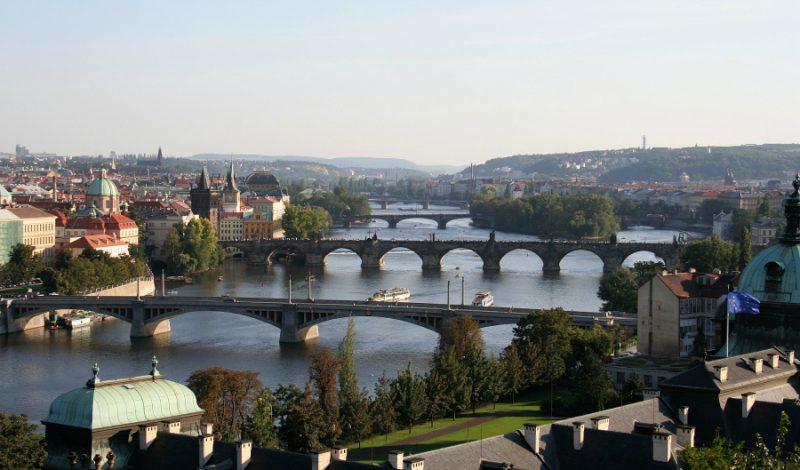

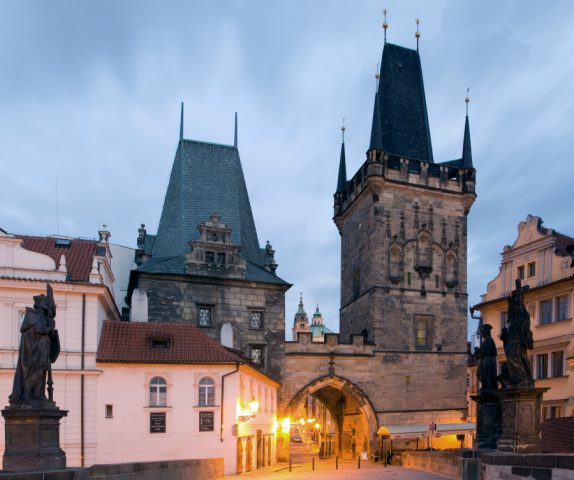
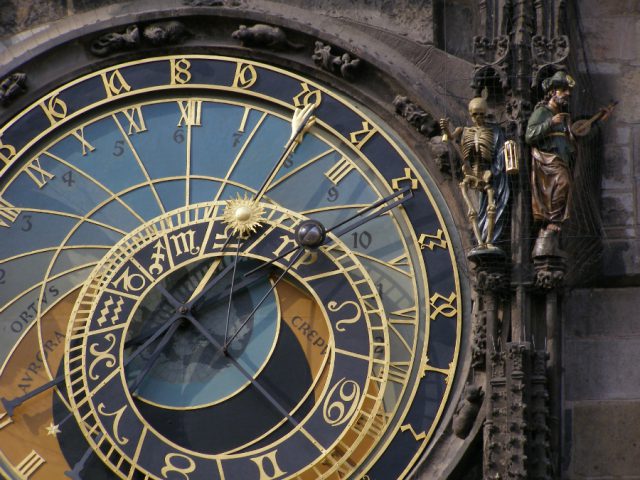
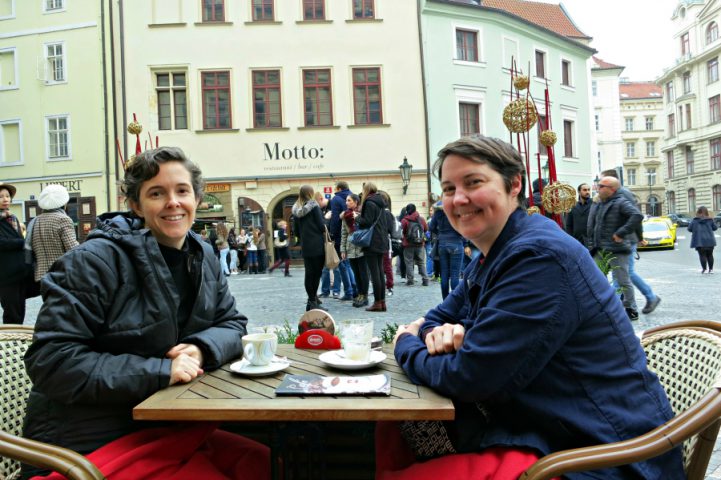

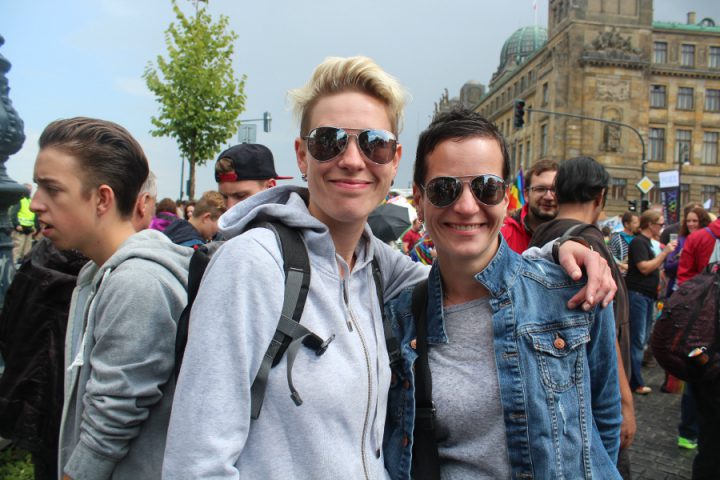
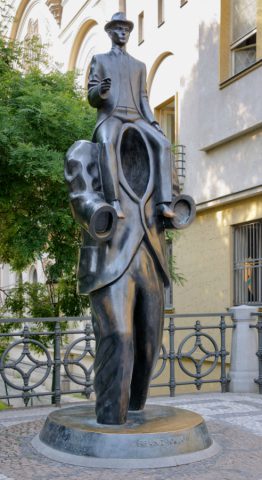

What Do You Think?